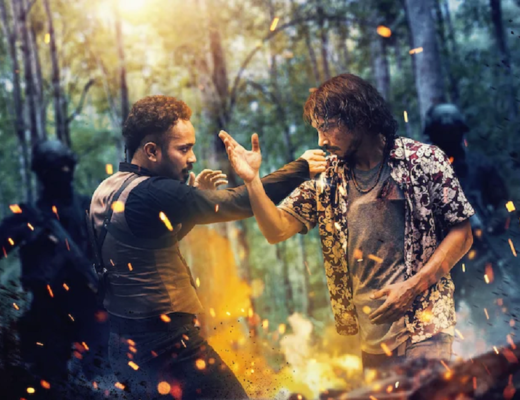Garrett Bradley opts for vague generality rather than the specific and personal, robbing Time of some of its implicit power.
From the western to the road movie, the legacy of the climactic homecoming looms large in American cinema, which is everywhere peopled by vagrants and drifters grappling with the belief that, as The Searchers’ elderly Mrs. Jorgensen puts it, “some day this country’s going to be a fine good place to be.” Though it doesn’t conform to either genre template, Garrett Bradley’s Time nonetheless offers a few key glimpses of itinerant iconography — a pre-robbery drive, a backwoods road, a recurring rush of pavement — and also culminates in a stirring familial reunion two decades in the making. Perhaps even more crucially, though, it’s a reminder that, especially for Black American families, that long-awaited “some day” has yet to arrive.
In Bradley’s film, for which she won the directing award in this year’s Sundance U.S. Documentary Competition, it is the Richardson family that holds the screen, seen in both contemporary footage and a trove of personal, mini-DV home videos. The latter were largely shot by Sibil Fox Richardson (also known as Fox Rich) over the course of nearly two decades, while she raised her six sons in the absence of their father Robert, who was serving a 60-year-sentence in the Louisiana State Penitentiary for armed bank robbery. For her own role in the crime, Fox served three-and-a-half years away from her family. Following her release, she spent the next 20 or so fighting to make it whole again.
In recent years, the injustices of the U.S. prison-industrial complex have been put to screen in such high-profile titles as Ava Duvernay’s documentary The 13th (2016) and Barry Jenkins’ James Baldwin adaptation If Beale Street Could Talk (2018). In its approach to the subject, Bradley’s film can roughly be situated between the two: it doesn’t fully operate as either institutional exposé or intimate family portrait, but instead fluidly, freely mixes elements from each. Eschewing the procedural emphasis on legal bureaucracy one might expect, the film focuses mainly on Fox, who quickly proves to be a natural, charismatic camera subject. In her dealings with court clerks and auto-sales clients, we see her tight-lipped smile and practiced politesse, not to mention the myriad other ways that she controls how she presents herself — for in a country that has taken so much from her, she understands the necessity of such vigilance. Of course, understanding is not at all the same as unthinking acceptance, and when she gets off a phone call after being stonewalled by a judge’s secretary for the umpteenth time, her rapid shift from controlled courteousness to frightening fury is something to behold.
In scenes such as this, Bradley capitalizes on the rhetorical skills and public presence Fox has cultivated over decades, which are most clearly displayed during speaking engagements tied to her book The One That Got Away, where she discusses her personal life and the broader injustices of the carceral system. (A scene that shows her son holding his own in a university debate likewise points up to the importance Fox no doubt places on oratorical skill.) But the director is also canny about her use of Fox’s home video footage, where she and her children often address the absent Robert explicitly, and which is frequently startling in its intimacy and directness. This, in contrast to the footage being shot by Bradley and her collaborators — for instance, a routine phone call to the State penitentiary — where one gets a sense of Fox’s guard going up, and her full awareness of the camera’s presence.
In the handling of such personal family material, this attention to questions of documentary observation and performance — the director’s constant awareness of her subject as camera-subject — is no small thing. But Bradley’s treatment of anything beyond Fox’s immediate presence — e.g. the details of her husband’s case, her broader activism, and how both of these fit into her current family situation — leaves something more to be desired. In both structure (non-chronological) and imagery (fleeting flashes of sky, cloud, and forest), the documentary favors strategies that might be termed “impressionistic” — fair enough for a film about the slipperiness of time and the difficulties of inhabiting the present when one is constantly looking to a long-awaited day. But Bradley’s overall approach comes with an unfortunate tendency to “universalize” the Richardson family’s struggles, pushing personal experience into vague generality, and blurring, rather than sharpening the contours of their situation. Faced with Time’s climactic homecoming, it is nigh-impossible to remain dry-eyed, but given the subject at hand, is not emotional force the least one should expect? For all of the film’s close-quarters scenes with the Richardson family, one leaves it with a sense that intimacy is no substitute for specificity, and the conviction that being truly present requires more than just being there.







